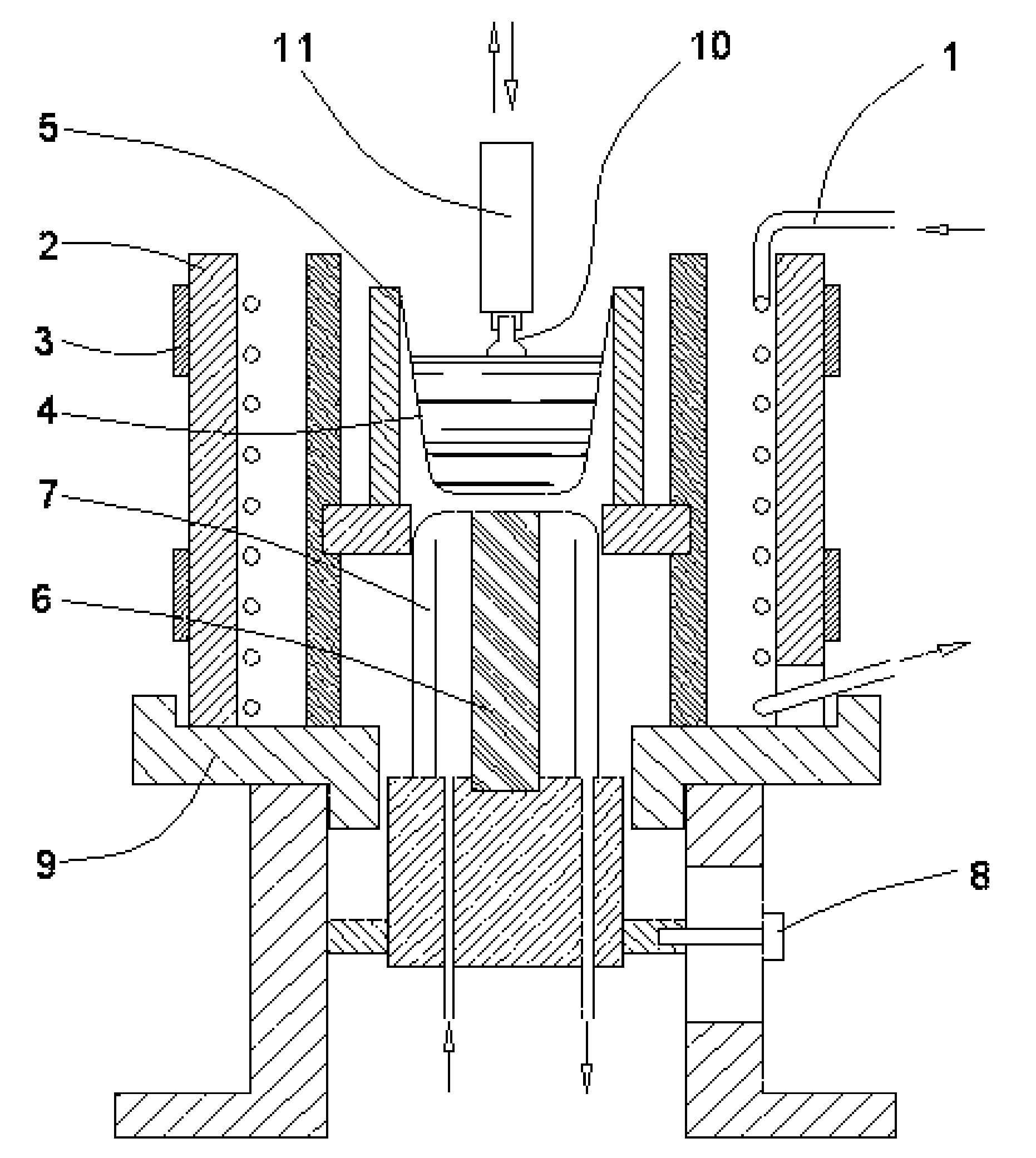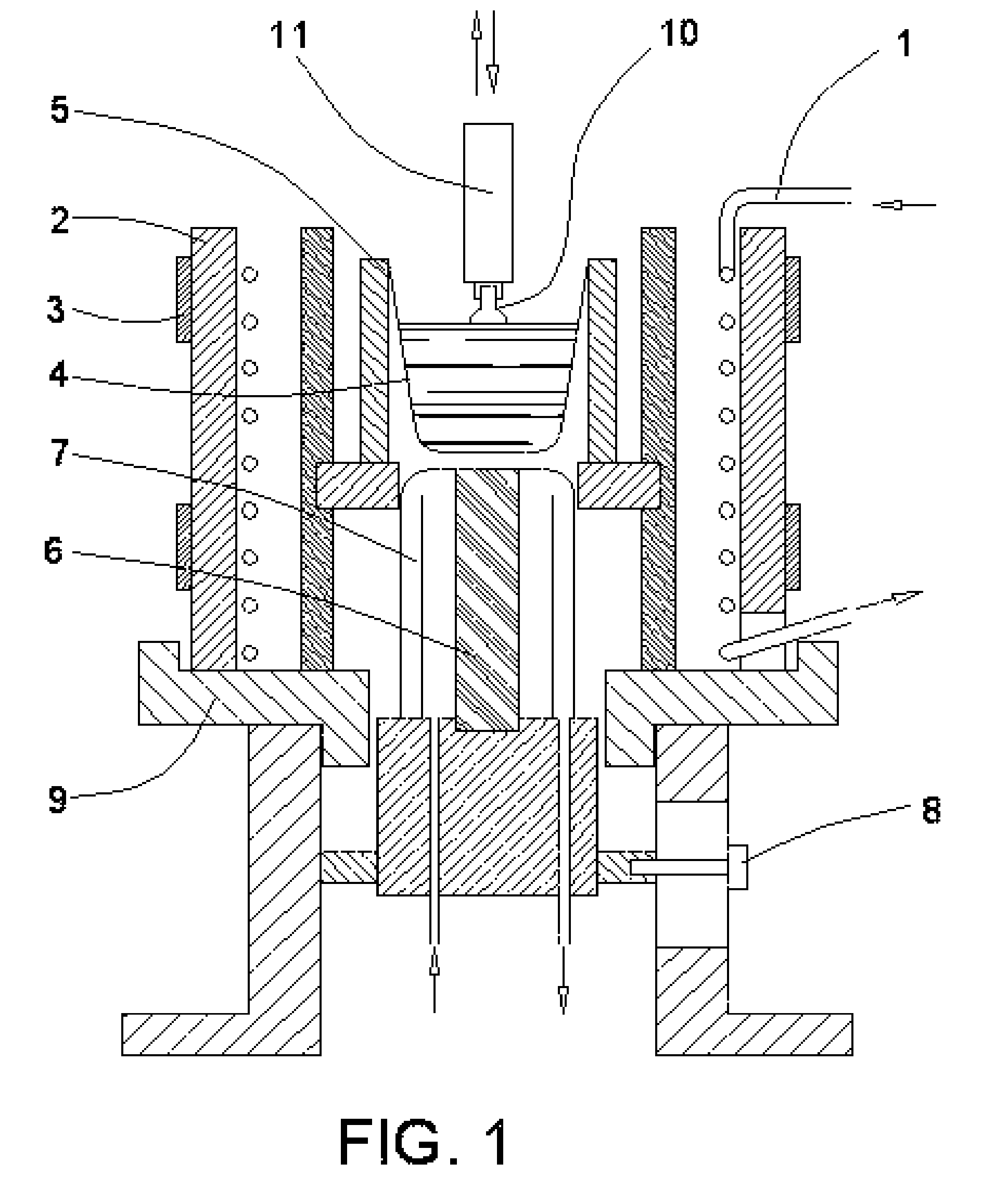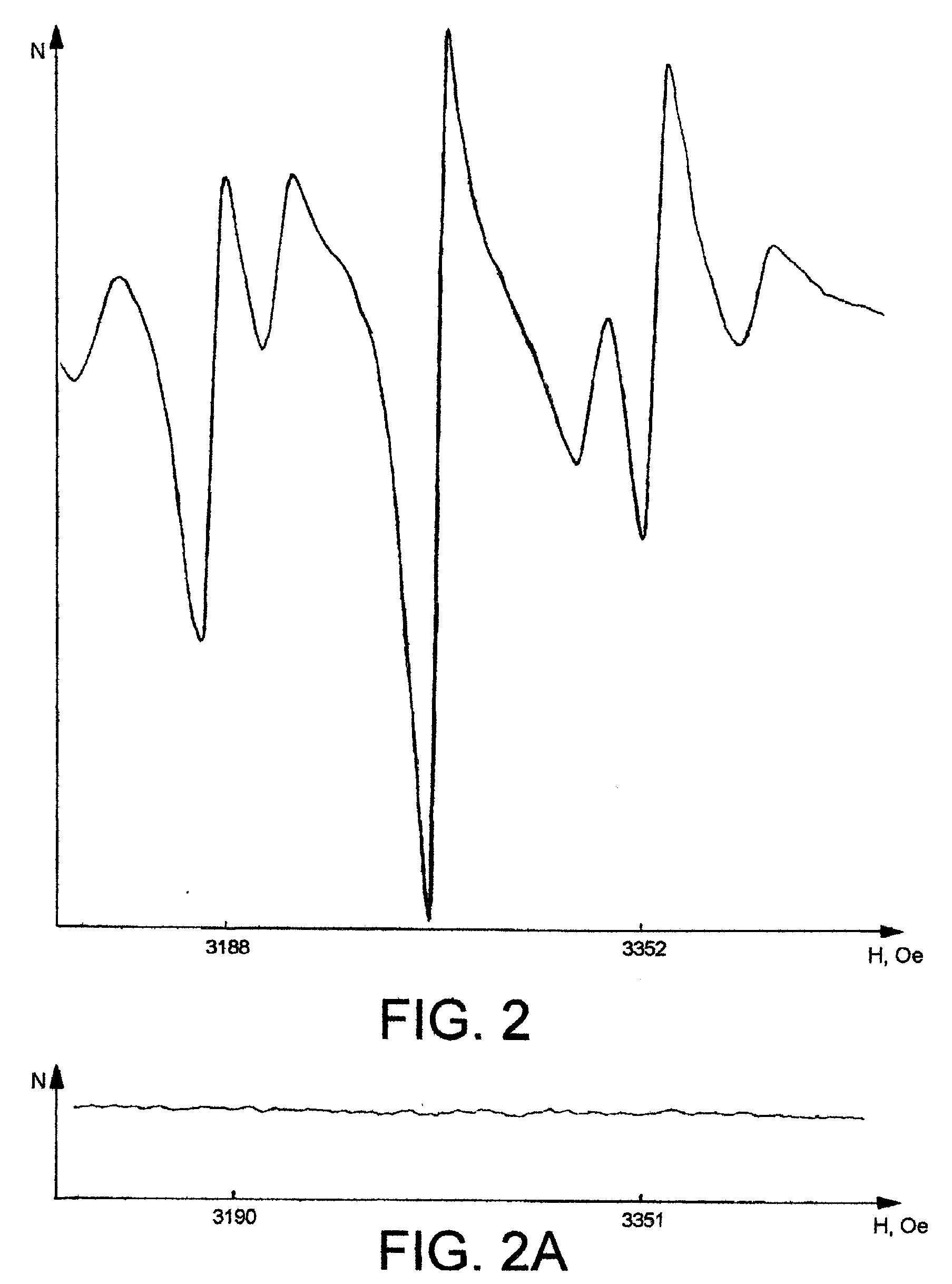Magnetic resonance spectrometer
a magnetic resonance spectrometer and magnetic resonance technology, applied in the field of magnetic resonance instruments, can solve the problems of large volume, high cost and bulky of conventional spectrometers, and no superconducting magnet can produce such a homogeneous field. achieve the effect of efficient and reliable preparation
- Summary
- Abstract
- Description
- Claims
- Application Information
AI Technical Summary
Benefits of technology
Problems solved by technology
Method used
Image
Examples
example 1
[0056] In one particular instance, the process was carried as follows. Super pure grade of the potassium carbonate K2CO3 and the lithium carbonate Li2CO3 and a tantalum foil of analytically pure grade were used. The foil was cut in about 2 mm wide pieces, placed in a quartz tube connected to an oxygen source, heated to above 850° C., and held at this temperature for 2.5 hours with the oxygen flow of about 0.1 m3 / h. After the cooling, the tantalum oxide Ta2O5 was ground in an agate mortar, separately weighted, placed together with other components in a mass proportion of 30.94% K2CO3, 0.26% Li2CO3, and 68.8% Ta2O5, and thoroughly mixed. Then the mixture was placed in the apparatus (FIG. 1). The crucible was 40 mm in diameter and 50 mm high and initially covered with a platinum lid having a T shape slot. The mixture was heated to 1000±30° C. and held for 5 hours at this temperature. The synthesis of K0.98Li0.02TaO3 is illustrated in a equation:
343K2CO3+15Li2CO3+250Ta2O5→500K0.98Li0.0...
example 2
[0058] In this instance, also, super pure grade of the potassium carbonate KCO3 as well as tantalum and niobium foils of analytically pure grade were used. The tantalum and niobium oxides were prepared under similar to above described conditions. Mass proportion of components was 32.1% K2CO3, 12.2% Nb2O5, and 55.7% Ta2O5. The synthesis of KNb0.2Ta0.8O3 is illustrated in a equation:
7K2CO3+4Ta2O5+Nb2O5→10KNb0.22K2O+7CO2.
[0059] It was established that, when the crucible used for the process was previously used for the example 1 process, a small amount of lithium is present in the melt. This phenomenon was exploited here to have the crystal doped with the lithium. The crystal was grown at the rate of about 1.5 mm / h with the melt cooled down at the rate of about 8° C. / h. The size of the crystal was approximately 4.5 mm square and 11 mm long. The crystal composition was K0.9998Li0.0002Nb0.2Ta0.8O3.
[0060] The crystals produced according to various embodiments of the present invention we...
PUM
| Property | Measurement | Unit |
|---|---|---|
| Fraction | aaaaa | aaaaa |
| Fraction | aaaaa | aaaaa |
| Fraction | aaaaa | aaaaa |
Abstract
Description
Claims
Application Information
 Login to View More
Login to View More - R&D
- Intellectual Property
- Life Sciences
- Materials
- Tech Scout
- Unparalleled Data Quality
- Higher Quality Content
- 60% Fewer Hallucinations
Browse by: Latest US Patents, China's latest patents, Technical Efficacy Thesaurus, Application Domain, Technology Topic, Popular Technical Reports.
© 2025 PatSnap. All rights reserved.Legal|Privacy policy|Modern Slavery Act Transparency Statement|Sitemap|About US| Contact US: help@patsnap.com



